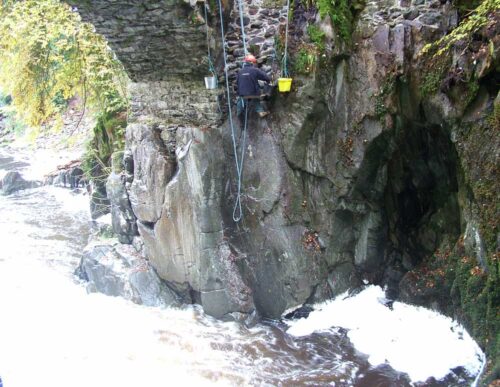For many years the steeplejack and building trades were guilty of accelerating the deterioration of all the stone built structures on which they worked. They did this by using cement mortars instead of lime.
Some years ago there was a resurgence in the use of lime mortar and we were quick to pick up on this new and important trend, educate ourselves on what lime mortar is and how it works, and learn how to apply it properly. We have a lot of knowledge on this subject, and we produce a high standard of work.
If a masonry stucture has been pointed with cement in the past, then that cement should be carefully removed and replaced with a hydraulic lime mortar. If masonry is being newly constructed then it should be constructed with hydraulic lime mortar. The next few paragraphs will explain the reasoning behind this.
Traditional buildings (such as churches) usually have solid walls, with no cavity, and are often built on insubstantial foundations. They are therefore liable to settlement and movement associated with seasonal changes in ground conditions. Lime mortar is softer and weaker than the stone or brick which it bonds and is therefore able to accommodate slight movements caused by settlement or temperature changes without significant cracking. Also, it is permeable and allows evaporation of rising and penetrating damp from within the wall. It is this permeability, or ‘breathing’, which helps to keep the building dry inside without a damp proof course or chemical treatments.
Modern cement pointing is very different from lime mortar. It is hard and brittle, much less porous and completely waterproof. Its use on traditional masonry is damaging in several ways.
Cement pointing is harder than soft brick or stone and is too rigid to accommodate settlement or movement in the wall. When movement occurs the edges of the stone or brick are forced against the hard mortar spalling the masonry and cracking the mortar itself.
Further damage is caused by rainwater seeping into the cracks in the pointing and around the edges of the stones. Because the mortar is not permeable this moisture cannot evaporate from the mortar joint once rain stops. Instead it is forced to evaporate through the face of the brick or stone and soluble salts present in the water crystallise in the surface layers of the masonry leading to crumbling and decay. This is sometimes so severe that the entire face of the stone is lost and the hard cement pointing is left standing proud. Further rainwater is trapped and the decay continues. The concentration of trapped water in the masonry also increases its susceptibility to frost damage in winter.
In contrast soft lime mortar allows moisture movement and, being more porous than the masonry, encourages evaporation and salt deposition in the mortar joints. Thus it is the mortar which decays and not the stone or brick. It is much easier and cheaper to repoint a wall than to repair or replace damaged brick or stone, and there is less loss of important historic fabric.
Old Cumnock:Trinity
The main part of this contract was the removal of all existing cement mortar from the spire, and replacement with a colour matched hydraulic lime mortar supplied by Mason’s Mortar, Edinburgh.
Here you can see the spire after raking has been completed. We have also washed the spire down extensively with clean water, to remove any remaining dust and grit from the open beds and joints.
The chipping around the edges of the stones has been caused by steeplejacks of the past removing mortar with raking picks. Because it is nearly impossible to use a raking pick without causing this damage, we use the smallest angle grinders available, with diamond blades, which will, if handled correctly, produce a perfectly raked joint with no damage to the surrounding stone. However, in the hands of someone who doesn’t care about their work, an angle grinder can cause massive damage.
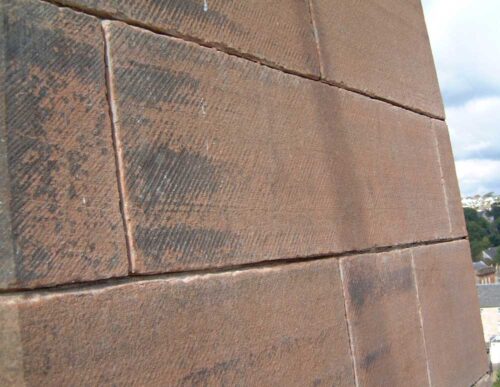
Looking up the spire after pointing was completed.
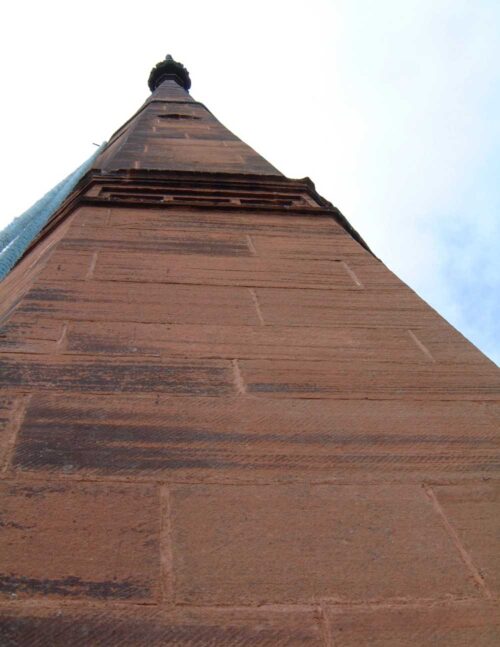
New lime pointing on the ornate windows.
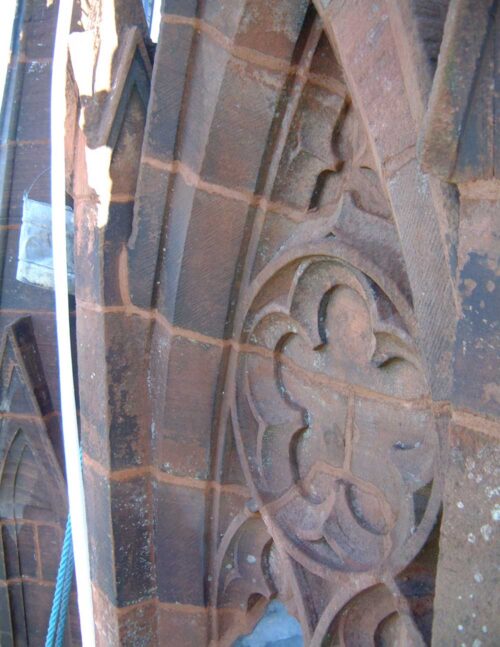
Another lime pointing job. This one was in central Edinburgh.
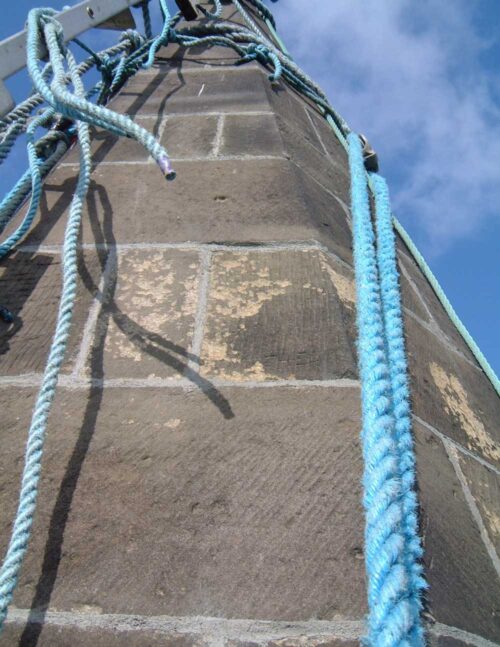
A complete and deep rake out, and subsequent full repoint with hydraulic lime mortar, of the entire spire of an Aberdeenshire Church.
This shot shows a pointed and finished horizontal bed above, a raked out vertical joint (note the depth achieved), and newly pointed and unfinished lime (it ends up smooth like the lime above).
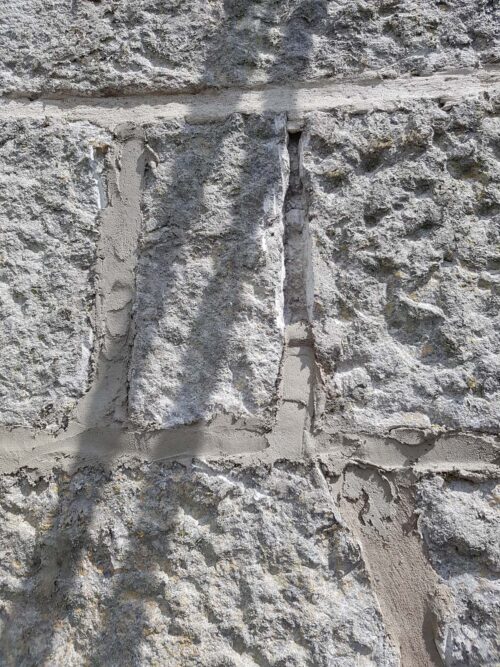
Newly applied (and finished) pointing, with deeply raked out beds and joints below.
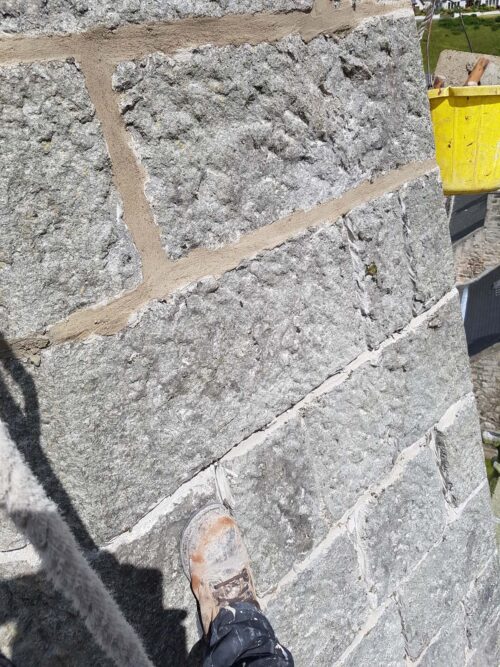
Looking down from above – pointing in progress.
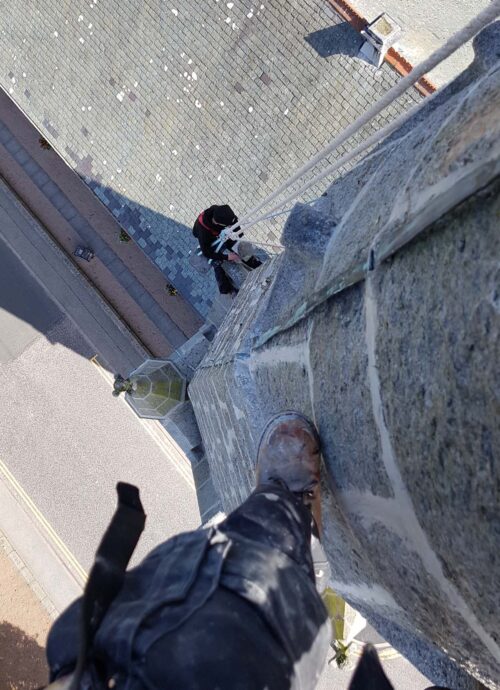
Pointing the awkward joints near the top of the spire.
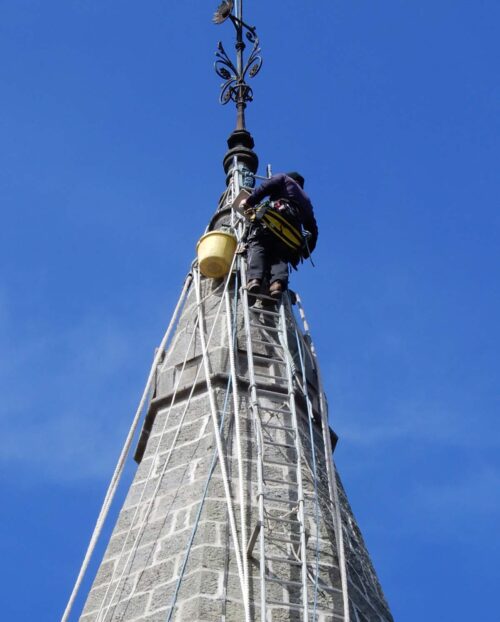
Newly pointed beds at the top.
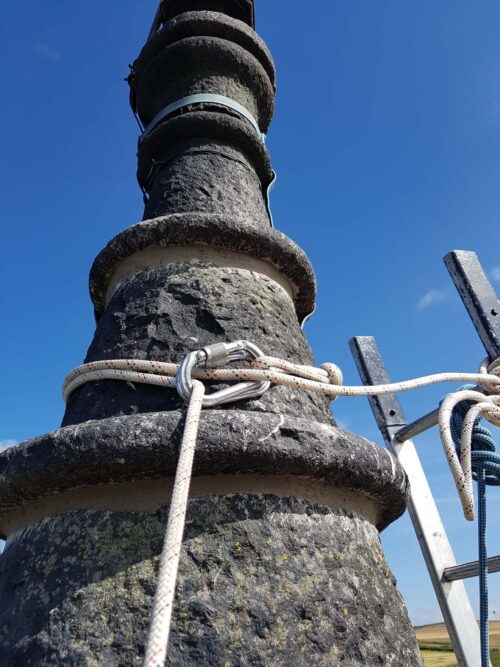
Nearly done.
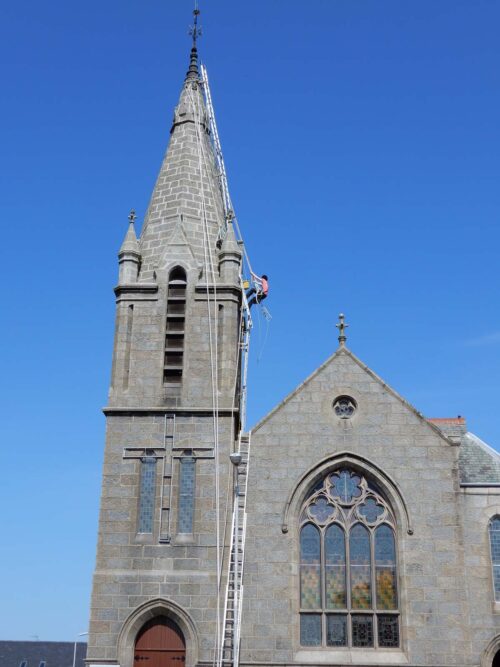
Looking down from the top at the fully pointed spire.
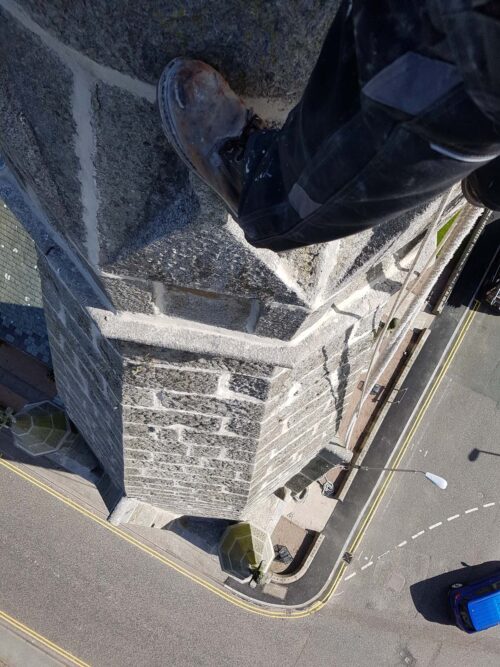
A full rake out and natural hydraulic lime repointing job on a single steeple face of a Dumfries and Galloway Church.
Raking out – an ardous job!
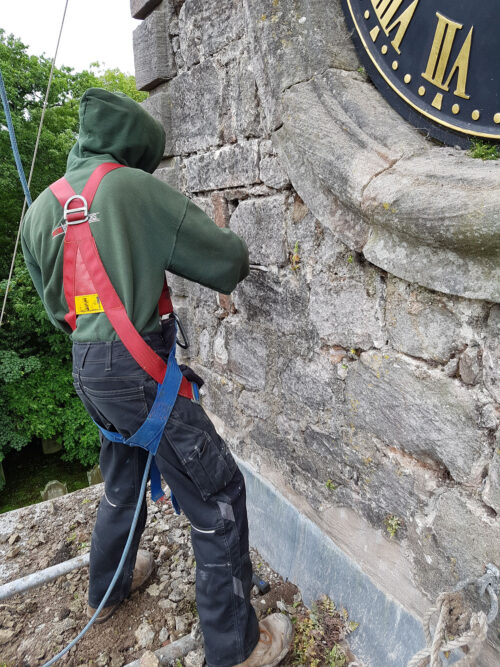
Looking up at the finished face.
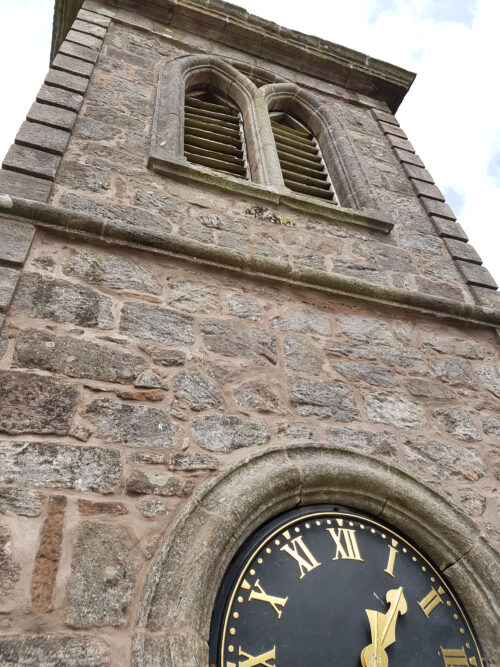
Another view up the face once pointing had been completed.
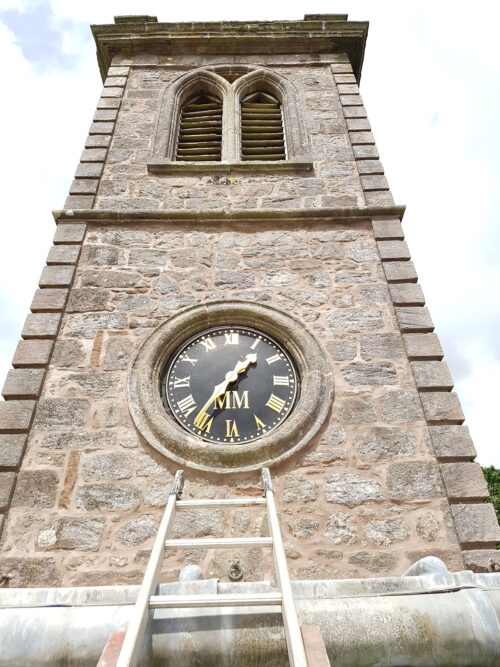
A more unusual lime pointing job. This was carried out for the National Trust. Site was the Hermitage in Perthshire.
